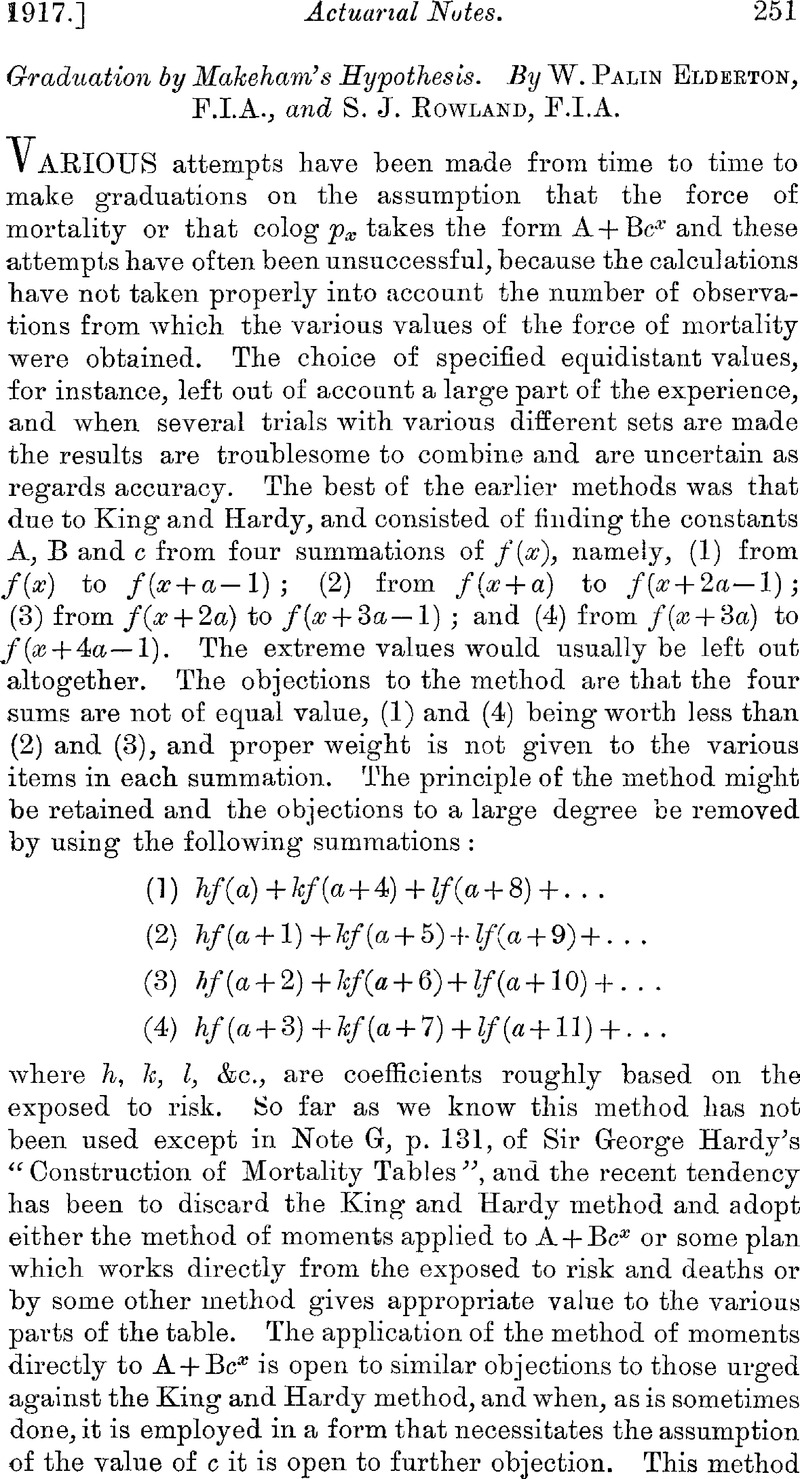Published online by Cambridge University Press: 18 August 2016

page 252 note * H. P. Calderon indicated some methods in J.I.A., vol. xxxv, pp. 15 et seq., but the general statement given here covers the methods suggested.
page 252 note † The method was suggested by Makeham, J.I.A., vol. xvi, pp. 344 et seq., for use with imperfect data, to the extent of an assumed log c with actual deaths and exposed, but not successive summations.
page 252 note ‡ We have, of course, assumed the arithmetical accuracy of all the results given by Dr. Steffensen.
page 256 note * G. F. Hardy gave formulæ for assuming a hypothetical Type III curve. If we had large tables so that suitable curves could be picked out, as they can from tables of the probability integral, this would improve the method, but a Type III curve fitted to the exposed leads to the same difficulty as a fitted normal type. It also means that the ordinates of the Type III curve have to be worked out, and the process therefore becomes very laborious.
page 258 note * It is interesting to remark that unadjusted moments would have reproduced Steffensen's least squares graduation almost exactly—logc being ·0392889, A ·0008560, and log B 5·69452.